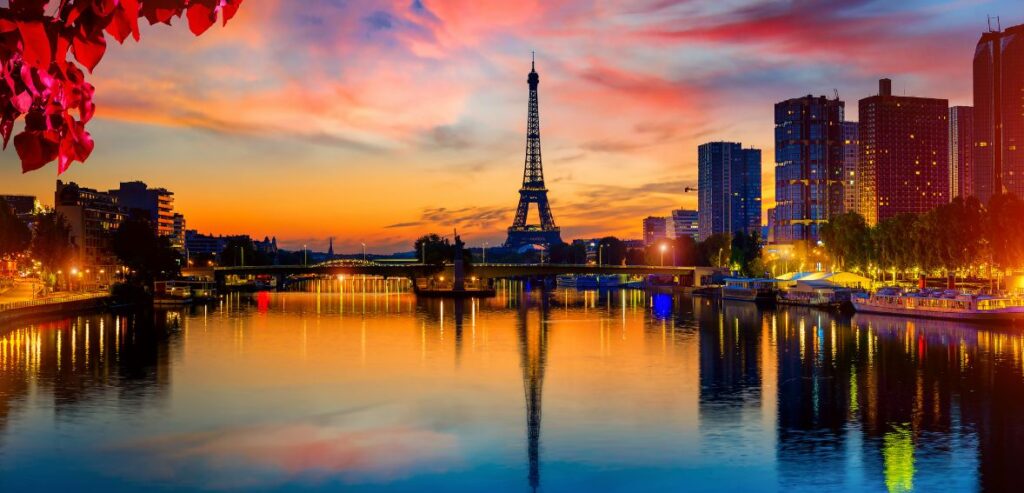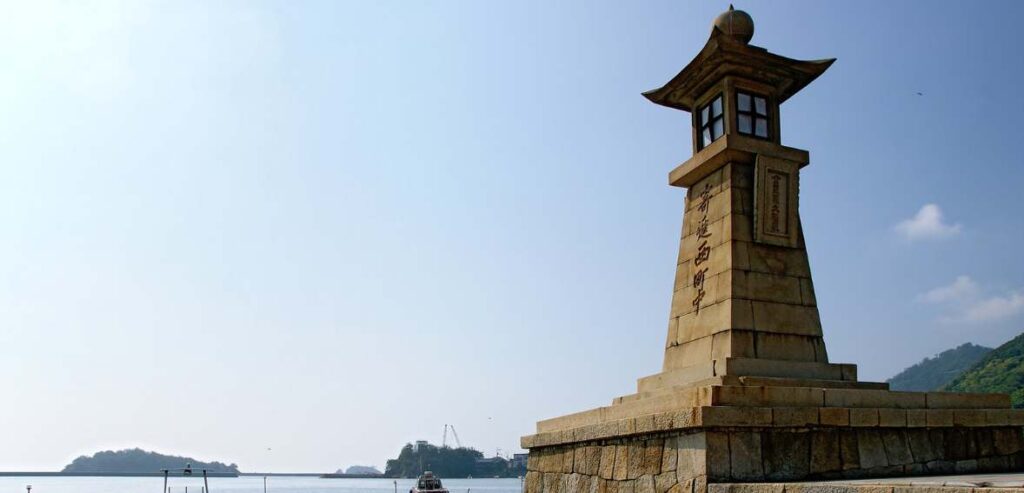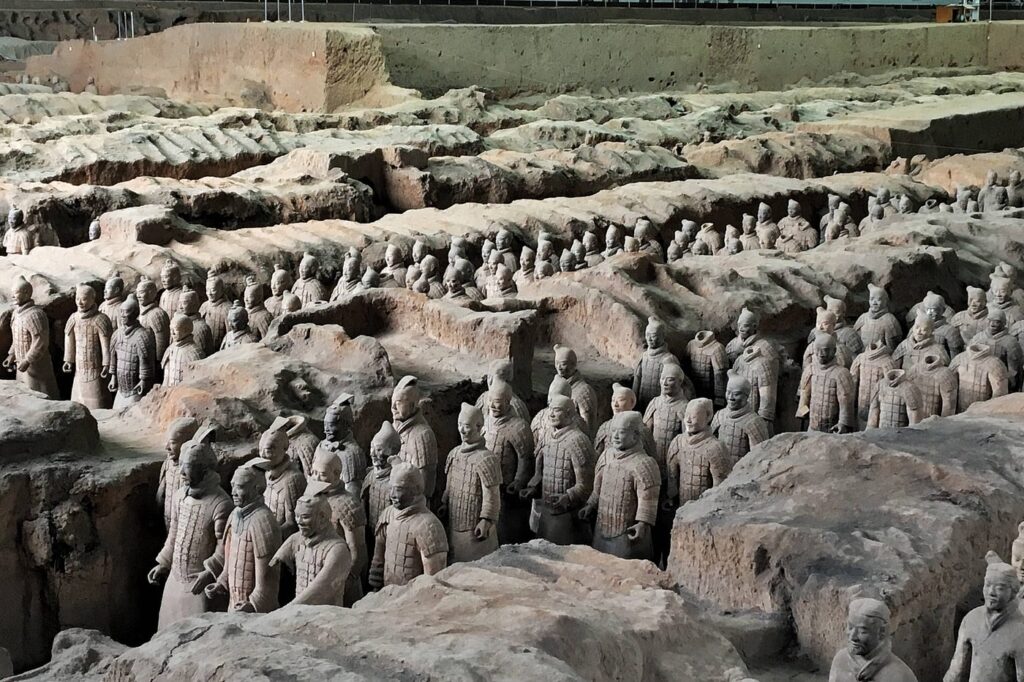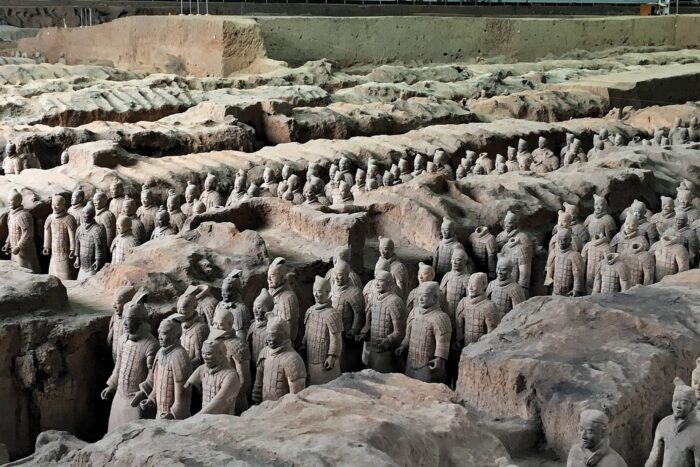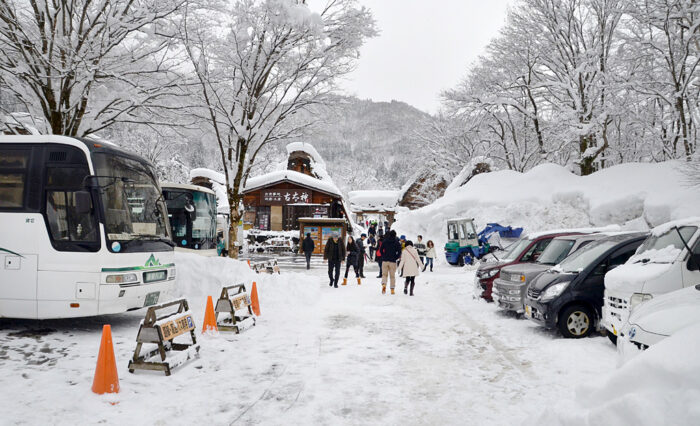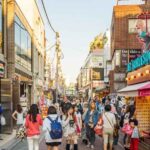Now Reading: Tales of Two Ancient Capitals, Day 2 (Xi’an – Han Yang Ling
-
01
Tales of Two Ancient Capitals, Day 2 (Xi’an – Han Yang Ling
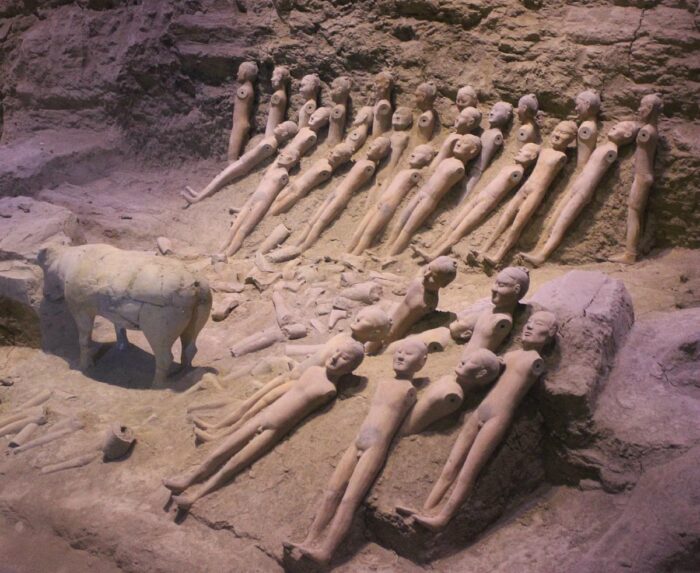
Tales of Two Ancient Capitals, Day 2 (Xi’an – Han Yang Ling
After the sheer immensity and audacity of Xi’an’s Terracotta Warriors captivated me on Day 1, I yearned to delve deeper into the storied history and relics of this ancient imperial city. What grander place to continue my initiation into China’s resplendent past than the mausoleum and tomb museum dedicated to the very dynasty behind yesterday’s legendary terracotta army? In this post I talk about Tales of Two Ancient Capitals, Day 2 (Xi’an – Han Yang Ling.
Discovering the Han Yang Ling Imperial Tombs
Located about an hour’s drive north of Xi’an’s city center, the Han Yang Ling grounds protect the grand mausoleum and underground tomb complex commissioned in 153 AD to honor Emperor Jingdi and his wife. It serves as one of the most immaculately preserved – and vast – necropolises remaining from China’s powerful 400-year Han dynasty.
Before even glimpsing the tombs themselves, the picturesque journey through Xi’an’s bucolic countryside primed our small touring group for the profound scale of emperors past. Verdant wheat fields danced in the breeze like shimmering golden lakes, while gnarled orchards of pomegranate and date palms heralded fertile agriculture civilizations dating back to the Han capital Chang’an (modern-day Xi’an).
Even grander vistas materialized as we approached Han Yang Ling within the immortal Qinling Mountain range. Misty peaks rose one after another, evoking the dramatics of a traditional Chinese watercolor. According to our knowledgeable scholar guide Mei, this topographical prominence plus auspicious feng shui elements like nearby rivers made the valley an ideal burial ground for Han royals.
The Museum’s Underground Marvels
Our first stop was the enormous Han Yang Ling Museum located just outside the mausoleum grounds. This impressively curated underground exhibit hall is dedicated to preserving and showcasing over 90,000 artifacts secreted within the tombs over many excavations since the 1990s.
I immediately sensed an otherworldly energy permeating the dimly-lit interior spaces preserving Han arts, crafts and statuary extravagance both beautiful and bizarre. Mei drew our attention to displays of miniature terracotta warriors just like those at Xi’an’s famed Terracotta Warriors site, reinforcing the widespread Han-era practice of burying inanimate armies to protect emperors in their afterlives.
But Han Yang Ling’s underground troves uncovered far more lavish and eclectic realms beyond those famous pottery foot soldiers. Strolling past myriad chambers brimming with priceless jewelry, metalworks, clothing and weapons, I marveled at the level of sumptuous craftsmanship, realism and scale exhibited in items like bronze horse-drawn chariots or jade carriage ornaments.
I was left wide-eyed by displays of bizarre ceramic zoomorphic figures – everything from life-size elephants and oxen to exotic phoenixes and fish. Were these fanciful creatures also part of the emperor’s enchanted underground kingdom? Or perhaps mythological symbols relating the heavens and stars? The more I saw, the fewer answers I grasped.
The Underground Necropolis Revealed
After the museum primed us with sufficient visual overload detailing the Han’s material obsession with joining their emperors for eternity, we proceeded outside. A steady climb up the valley flanks brought us to the mausoleum’s main draw – the unsealed entrances to Emperor Jingdi’s underground necropolis.
Mei cautioned that, despite many decades of archaeological excavations at Han Yang Ling, an inexplicable series of underground gates and labyrinthine passages have proven impossible to navigate more than 50 meters inside. Portions of this labyrinthine substructure designed to accommodate royal burials and ceremonies still remain inaccessible even to the most seasoned spelunkers.
We descended into the main yawning entry chamber, starting to feel the spike in humidity and oppressive darkness that entombed much of the tomb’s bounties. While the scale and craftsmanship of the exterior perimeter walls dazzled with their carved Han dynasty decorative masonry, Mei noted how the entire necropolis remains sealed and preserved ever since the Han retreated 1,800 years ago!
Every softly-lit nook we squeezed through revealed evidence of the complex’s unfathomable enormity – stone ramps, carved stele monoliths, sunken storage chambers for grave goods. All so immaculate, almost as if the Han masons had just departed days ago, their emperor’s final palatial estate suspended in eternal stasis.
Han Afterlife Beliefs & Visualizations
Retracing our steps back above ground, Mei led us to several key structures clustered opposite the main mausoleum entrance that proffered clues to Han afterlife beliefs and cultural iconography. Most visually striking was an intact stone archway and “spirit road” meant to usher the emperor’s soul into his afterlife kingdom.
From there, a processional stroll brought us to the crowning achievement of Han Yang Ling – twin ceremonial pavilions aligned based on Han astrology and cosmology. Ornate crimson-pillared temples recreated the Han’s universe from the underground labyrinth below to the heavenly constellations and planets above. Inside, we received a fascinating primer on the Han dynasty’s immensely complex views of how imperial burials connected the celestial realm via strategic alignments, symbolic animals and familiar Chinese motifs like yin-yang and the celestial poles.
Much of the surviving artwork, ceremonial bronzeware, and even the positioning of the pavilions against the mountaintops illustrated how the Han emperors endeavored to recreate perfect harmonious alignment between earthly kingdoms and immortal dominions. They could scarcely fathom that less than 2,000 years later, we’d still be directly gazing into the remnants of their obsessively engineered cosmic equilibrium.
As we reluctantly departed the Han Yang Ling grounds, letting the mountain mists envelop the ancient pavilions and pathways once more, I couldn’t help but feel a profound shift in my soul. The experience transcended simply touring ruins or admiring museum artifacts. In just a few short hours of walking Han Yang Ling’s ethereal necropolis footprints, I’d witnessed ancient visualizations and beliefs made tangible.
Here, an entire civilization’s view of Heaven and Earth – so immense and sacrosanct that we still struggle to grasp its enormity today – manifested itself before my eyes in crafted perfection. More than enlightened, I felt profoundly humbled to have gazed into the ambitions of all-powerful emperors who simultaneously towered godlike while remaining minuscule against the soulful eternal rhythms of the Qinling majesty around them.
Tips for Visiting Han Yang Ling
- Arrive by 8:30am to avoid tour group crowds at the museum and mausoleum
- Book a knowledgeable guide well-versed in Han history and their cultural beliefs
- Wear comfortable shoes, as there’s a lot of walking between the sites
- Plan 3-4 hours minimum to see the museum halls and necropolis grounds properly
- Be mindful of your environmental impact, as excavations are still active
- Read up on the Han’s development of Taoism and cosmological influences
- Check weather for rain, as parts of the necropolis may become slippery when wet
Whether you know little or have studied Chinese history extensively, Han Yang Ling represents an absolute “bucket list” wonder not just for the Middle Kingdom, but for all of ancient civilization itself. Wandering these grounds instills a surreal sense of peering directly into the past, witnessing the eternal obsessions and preoccupations of once-mighty emperors for whom the entire universe rotated on elaborate cultural axes and symbolic meanings we’re only beginning to unlock today.
Do not simply visit Han Yang Ling – become one of the lucky few to properly bear witness to its timeless soul before continuing on your own quest of discovery deeper into China’s two ancient capitals: Xi’an and beyond. I hope you enjoyed this Tales of Two Ancient Capitals, Day 2 (Xi’an – Han Yang Ling.


